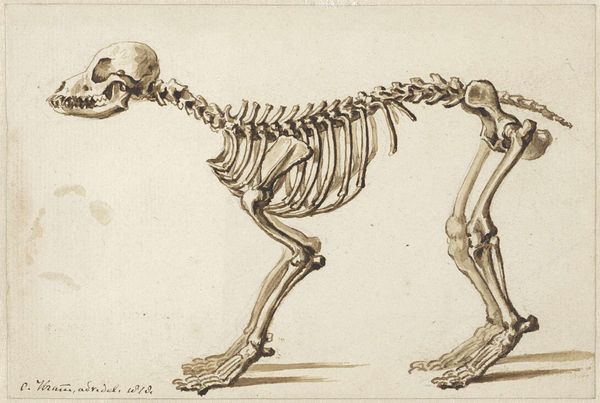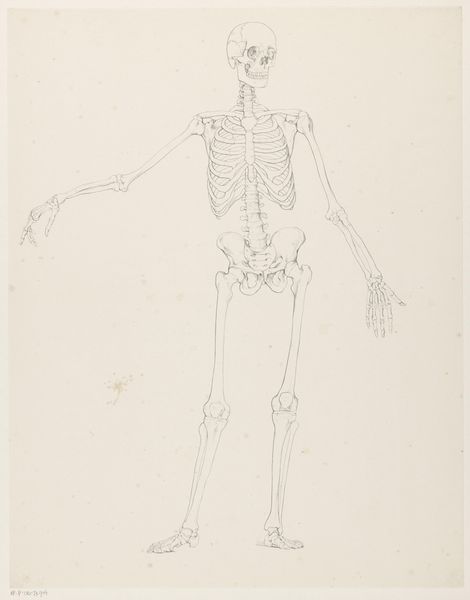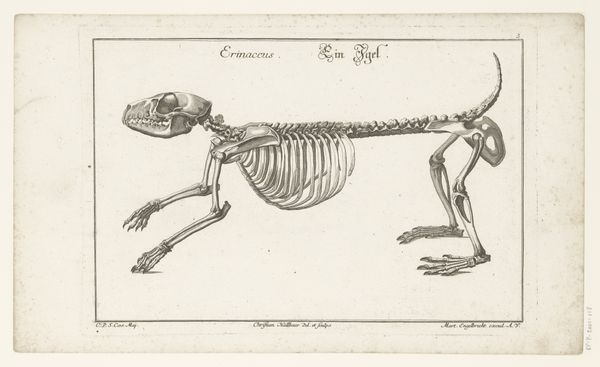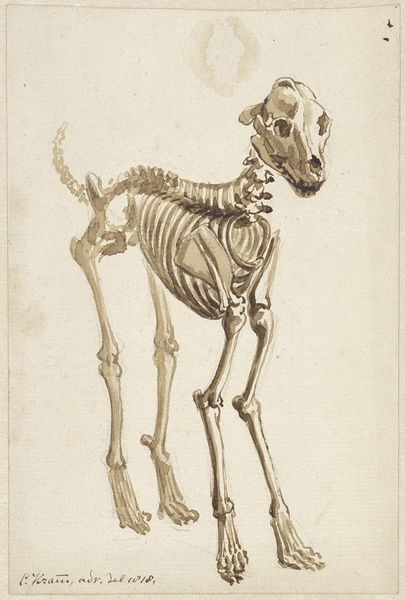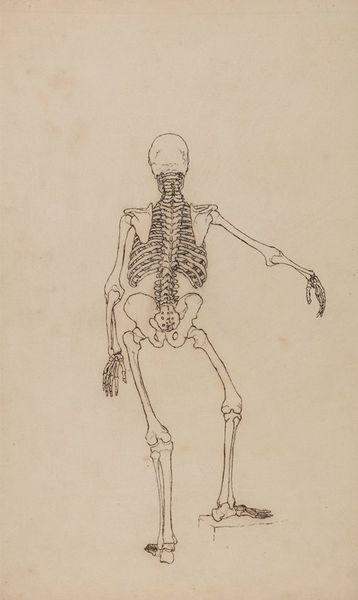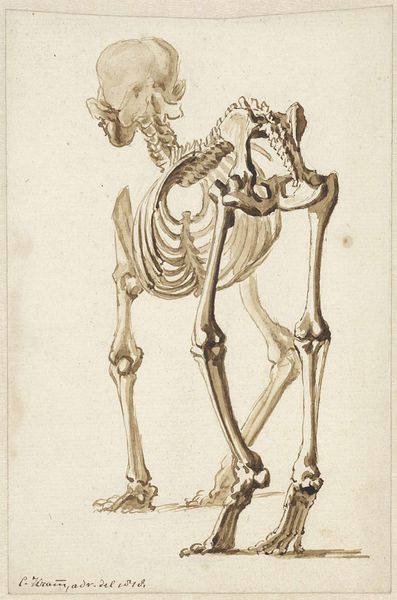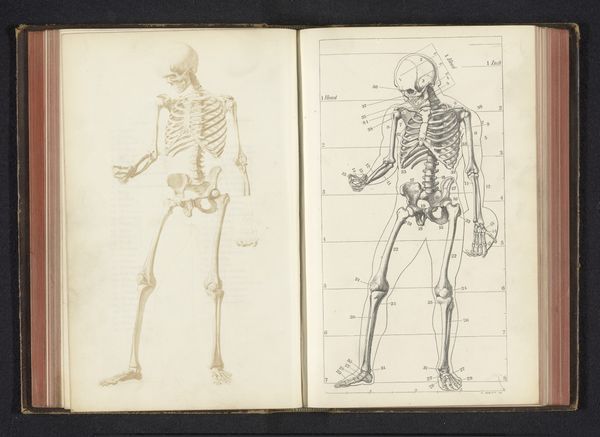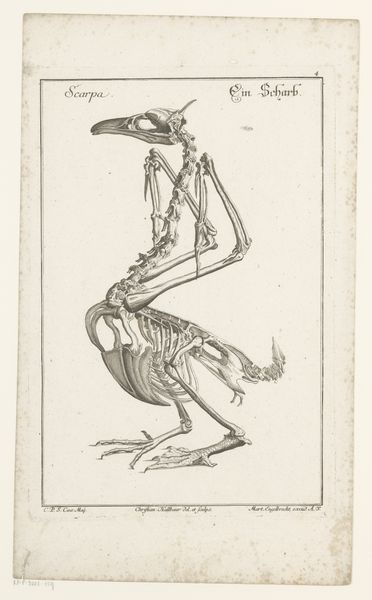
drawing, pencil
#
drawing
#
landscape
#
figuration
#
pencil
#
academic-art
#
realism
Dimensions: 295 mm (height) x 345 mm (width) (bladmaal)
Editor: This is "Katteskelet. Foroven et detailstudie," or "Cat Skeleton. Above, a Detail Study," made with pencil on paper in 1835 by Johan Thomas Lundbye. I'm struck by its delicate quality and how it blends scientific observation with artistic expression. As a study, where does this fit into the art world of the 19th century? Curator: That's a fantastic question. These detailed studies were part of the academic tradition, emphasizing anatomical accuracy, a tradition vital for history painting, a genre Lundbye would have aspired to. The cat, in its stillness, departs from dynamic heroic subject matter typical of academic art; therefore, it's very likely a private study. However, that Lundbye rendered it implies he also considers a public display. How do institutions encourage artists like Lundbye while supporting art rooted in more popular national sentiments? Editor: Interesting point about the balance between artistic development and catering to public taste. Is that why Lundbye mainly worked in landscape art and studies of animals instead of History paintings? Curator: Exactly. The Royal Danish Academy might value such work as a building block for artistic technique, the actual market preferred his landscapes. The "Katteskelet" also reflects a broader interest in natural science, and the growth of museums. Do you think drawings like these supported new disciplines? Editor: Possibly. The rise of scientific inquiry meant a higher regard for works of art with an aspect of accurate documentation... and also perhaps as sources of data. Curator: Precisely. What could otherwise be considered mere technical studies could hold great cultural value depending on how and where they were displayed or employed. The politics of display really shapes reception, wouldn't you say? Editor: Absolutely, and it makes me appreciate the artist's detailed observation and the institutional forces surrounding their artmaking more deeply. Thanks for unpacking it!
Comments
No comments
Be the first to comment and join the conversation on the ultimate creative platform.
